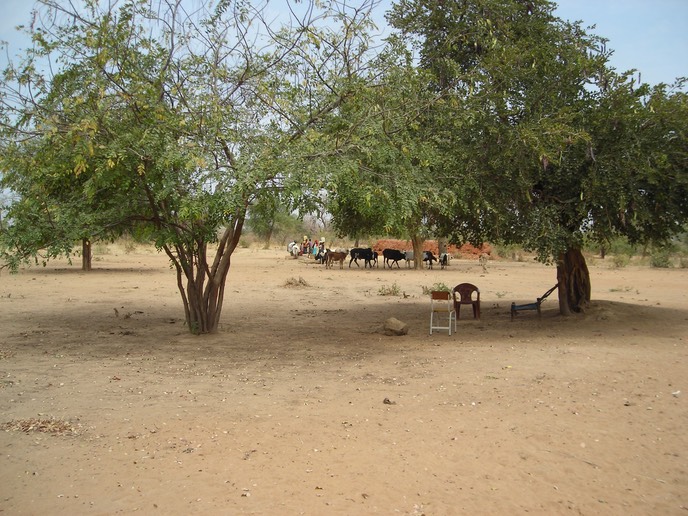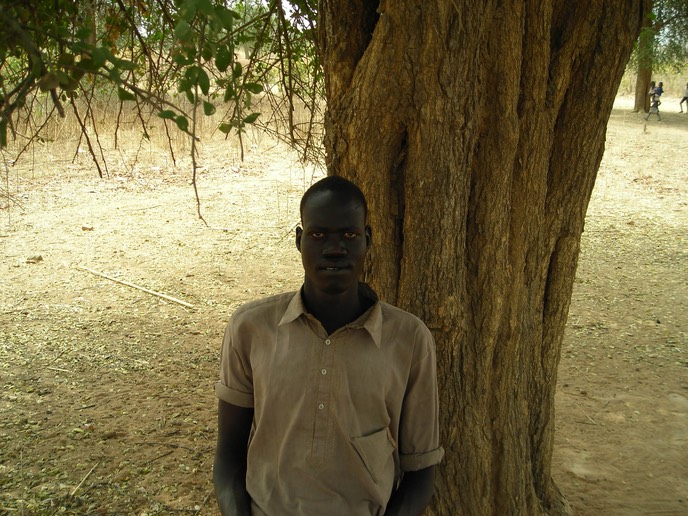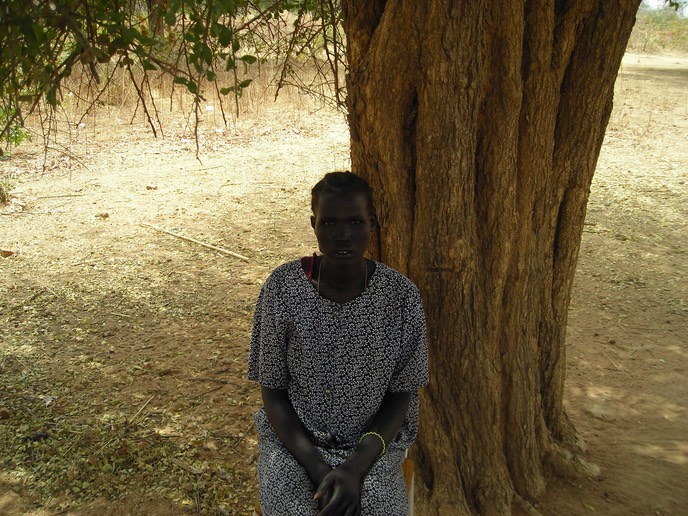I met four former slaves.
One of the reasons I wanted to see South Sudan was that I wanted to speak with locals liberated from North Sudanese slavery. Christian Solidarity International arranged for me to interview former slaves. They also provided an interpreter.
The subject of slavery fascinated me all my life. I could tell you the usual story of the sophisticated European liberal who obviously opposes all forms of slavery but the truth is most sophisticated European liberals don't. Slavery is alive and well in many places and most Europeans and Americans couldn't care less. Few people are interested enough even to read about slavery, even fewer could be bothered to voice an opinion about actual slavery (rather than the concept of slavery which is universally condemned).
But the truth is, slavery exists; and most slaves are still Africans. And the slavers are Africans too although in the case of Sudan they are Afro-Arabs, descendants of Arab colonisers.

We met with the former slaves under those trees. They had waited in a makeshift hut (for all I know) for hours before our car arrived. They wanted to tell us their stories. They also received payment (in natural goods) for their time.
I asked for and received permission to publish their photographs and tell their stories. I specifically asked them if I could publish their pictures and while for some of them, specifically the men, I could tell that they were still trying to get used to the concept of having a right to decide about these things, they, particularly the woman, were very eager to explain to me that I can use their pictures if only I tell their story to someone. Not many people talk to them, not many people from outside South Sudan.
I hope I assign the photographs correctly!

This is Garang Garang Deng. He was caught by the slavers when his family's village was attacked.
His ultimate "owner" gave him the Muslim name Muhammed but Garang was an animist (the traditional religion of the sub-saharan pastoralists). As a slave he was put to work as a cowherd. During the day the cows were in a fenced area while at night he was out with them on the grassland. If a cow got lost, he had to look for her and if he didn't follow orders he was beaten. This is a fairly usual life of a slave in the region.
After being liberated by Christians Garang himself became a Christian. He said he liked choosing a faith for himself.
I made a note that he is probably 15 years old, although I think he looks older.

This is Deng Akec Deng.
He is still wounded from when his master hit him when a goat was lost. He was originally from the village of Titchok and as a slave worked as a goatherd. His Muslim name at that time was Musa, Moses.
He too was an animist before he was captured and is now a Christian.

This is Akot Ngong Deng, 12 years old, from the village of Wakabil.
He was captured about two years earlier and his Muslim name was Ibrahim. He became a Christian because Christians liberated him. I couldn't find out much more from him because he was very quiet and shy.

This is Achol Akohon Dau from the village of Maluelkuel.
She was the one who told me most about her life as a slave. In contrast to the other former slaves I met she was not captured in a village fight. She was captured in a bona-fide slave raid, apparently together with many other girls from her village. Her Muslim name as a slave was "Howa".
While the male slaves worked as goatherds or cowherds and followed the orders of a man, she was put to work as a servant of the master's wife. Sometimes, she told me, the male slaves resisted their masters and were badly beaten for it. That scared her and so in general she was very obedient. Apparently her female master was in many ways worse than the male master. As a household slave she was part of the household and within the household there are no rules of conduct that the master still observed outside. But I don't know if she was ever beaten. I presume she was.
Achol was already a Christian when she was captured.
My general impression
All four were very shy and seemed weak. They struck me as people who still haven't managed to accept that they are now free and they seemed to fear a return of their respective masters. It is now unlikely that they will become slaves again.
There is an argument that slavery is better than poverty or hunger. I think the argument is wrong. A slave is not better off than a free person because if there is enough food, the free person can work for food like a slave can, but the slave will be the first to die when there isn't enough food to feed the master's family while a free person can walk away and see if somebody else offers food for work.
In the Sudan all the slavers are Muslims. That's why the slaves' (temporary while they were slaves) Muslim names are so important. The slavers are also ethnic Arabs (or African tribes that feel like Arabs or want to be Arabs) whereas Muslim African tribes do not generally keep slaves or capture them.
The South Sudanese, whether Muslim or Christian or animist, do not practice slavery. They also couldn't if they wanted to, as one of them told me, because the village raids always happen in South Sudan and never in the north. That made a lot of sense.
Europeans generally don't care about these things, and I myself am no idealist either. I didn't want to help, I just wanted to learn, and so bought my way into an expedition to the remote region at the Darfurian border. The result of my expedition is this article and the two preceding it. Some of the things I learned I cannot easily write down, but I think the two most important facts I took from the expedition are these:
- The people of South Sudan are surprisingly clever (I had discussions with them about milk production and how to organise milk deliveries in large cities that frankly would astonish economics teachers)
- Slavery is real, it is not some kind of historic event that we can all laugh about, and it hasn't even changed in thousands of years (simply because slave labour can only be used for simple tasks like cowherding)
